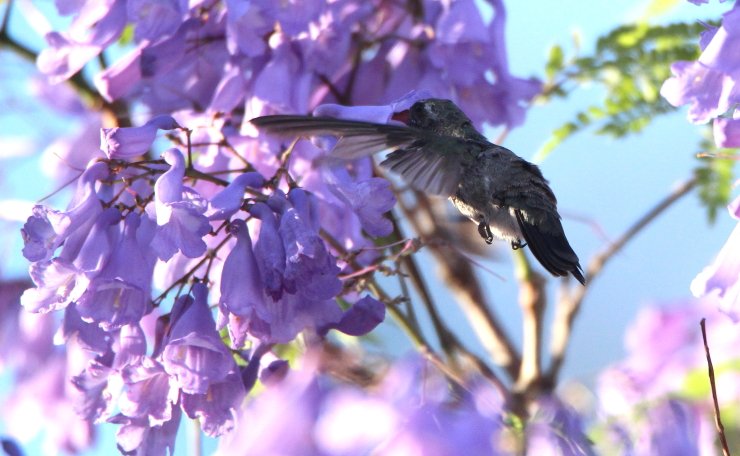
Those who follow my posts know by now that I love gardening. And I love making my little garden (some 1400 square feet) more attractive to birds. But I would never have imagined how important it would be to my emotional well-being to have a bird-friendly garden during lockdown.
There are lots of online sources of information on bird-friendly gardening, but much of this information is oriented towards those who live in temperate climes. And while Dogwoods and Eastern Redbuds may be great options in Massachusetts, they won’t grow for me in Morelia, Mexico. My climate is very wet in the summer, and bone-dry in the winter. Every other year or so, we experience the lightest of frosts, nothing killing, and our warmest temperatures (in the 80s and 90s) occur in late spring. We share some plant options with southern California, and others with Florida.
Historically, my plant selection process has mostly been to try a bit of everything, let them fight among each other, and the plants that survive, while offering some visual interest, become the major players. In recent years, I have moved much more in the direction of plants that attract birds. I don’t have space to introduce many native plants in my current space, but my landscaping project at our church (about which I have written previously) heavily favors natives.
So what are our very best options for attracting birds to our garden? Frankly, I’m not sure! My little garden has not given me a space to try all the possibilities available. But I have tried as much as space will allow. Probably more! So I will list my main garden plants, in alphabetical order, with notes on their effectiveness for this goal. You may be surprised by some of my observations:
- Apple: Our climate lacks winter chill for our apple tree to do very well. Occasionally, a bird will take a bite of the little apples that do form. Mostly, we don’t let them.
- Ash: My ash tree is at least 50 feet tall. It doesn’t seem to offer food or shelter for birds; but, being the tallest tree on the block, is an important stopover for lots of species. When it drops its leaves in mid-winter (because of the dry season, not the cold) it fills both my compost piles to the brim. And it sprouted on its own from seeds among leaves I brought in to add humus, so that is another plus. Who doesn’t love a freebie?
- Bamboo: These seem to be biological deserts as far as the birds are concerned. But it gives me an endless supply of stakes for the rest of the garden.
- Bananas: Now this may surprise you northerners. Hummingbirds, and, especially, Orioles love to get nectar from banana flowers! And, bless them, they ignore the delicious, citrusy-flavored fruit. Also, my all-too-abundant House Sparrows have learned to pull thin, flexible strips off of my bananas’ leaves, which they use to weave their nests. It’s ingenious… and also infuriating.
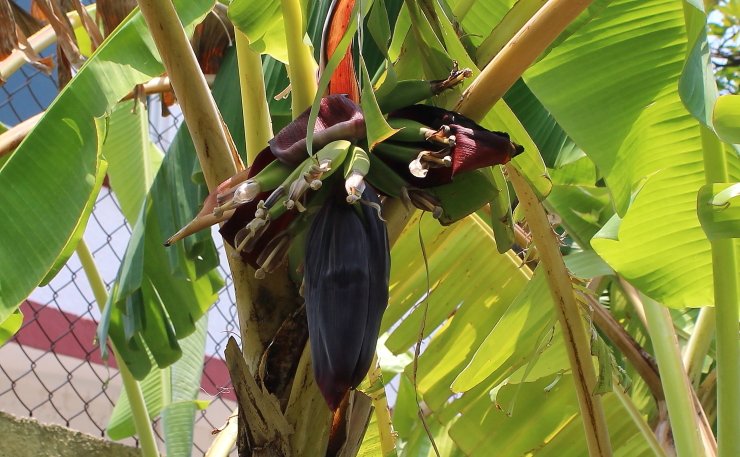
- Blackberries: My only regret about the popularity of these fruits among the Curve-billed Thrasher/Blue Mockingbird/House Finch set is that I don’t get to eat many berries myself. One of our birdiest plants.
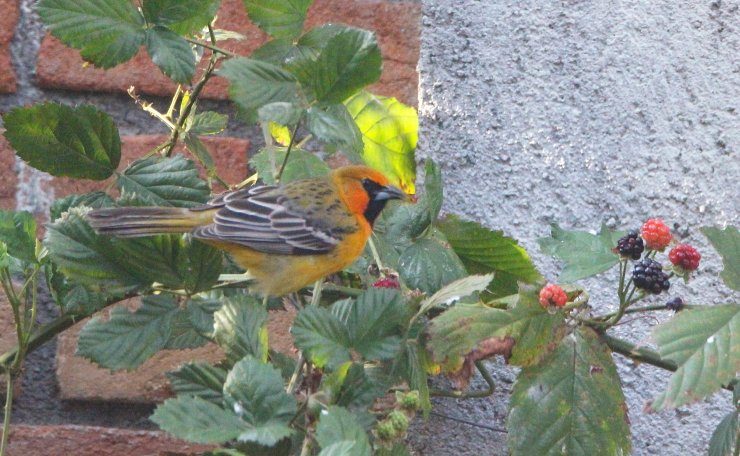 It turns out Streak-backed Orioles like my blackberries.
It turns out Streak-backed Orioles like my blackberries.
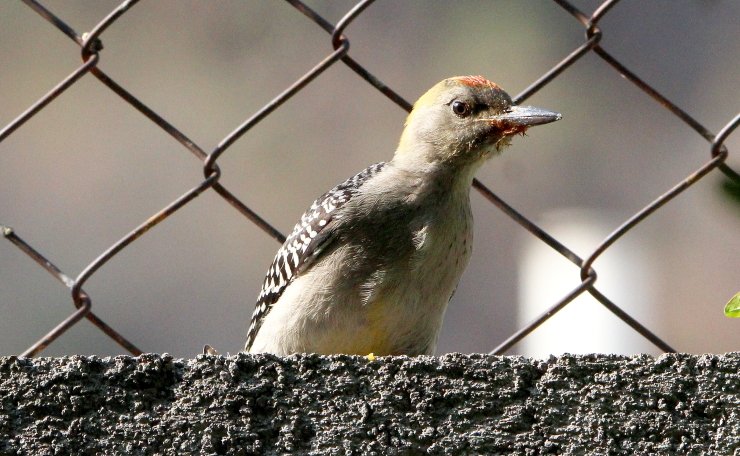 Golden-fronted Woodpeckers apparently like blackberries, too.
Golden-fronted Woodpeckers apparently like blackberries, too.
- Bouganvillea: Back when I had less flowers in my garden, Hummingbirds would sometimes feed off these flowers. But they have better options now (see the Salvias). Pretty, but a wash for attracting birds.
- Citrus: I have never seen an Oriole go after any of my oranges or tangerines, but our winter Warblers love to feed on whatever insects feed on their leaves — especially the Wilson’s Warblers, which pretty much own my citrus trees.
- Creeping Fig / Virginia Creeper: Birds love to nest on the 3-story green wall made by these vines. Yay! Unfortunately, they are all House Sparrows. Boo!
- Grass: What little lawn I have serves exactly one purpose. It keeps my wife happy. But Canyon Towhees and Inca Doves poke around in there, so maybe the lawn has something going for it.
- Jacaranda: The jacaranda, from Madagascar, is a spectacularly beautiful tree when in bloom here in March and April. The rest of the year it has feathery leaves that produce a filtered shade under which lots of plants can grow well. But there’s more! Those lavender flowers attract lots of Hummingbirds. Warbling Vireos and several Warblers like to look for bugs among its leaves. Black-headed Grosbeaks may look for seeds among its decorative pods. And when I’m lucky enough to have a Golden-fronted Woodpecker visit the garden, I know that, for some reason, it will be on the jacaranda tree. Plus, it’s my other freebie!
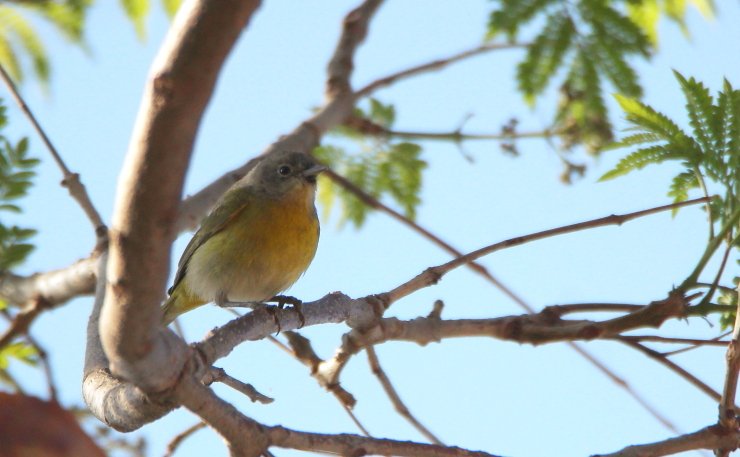 A Nashville Warbler, on the jacaranda tree.
A Nashville Warbler, on the jacaranda tree.
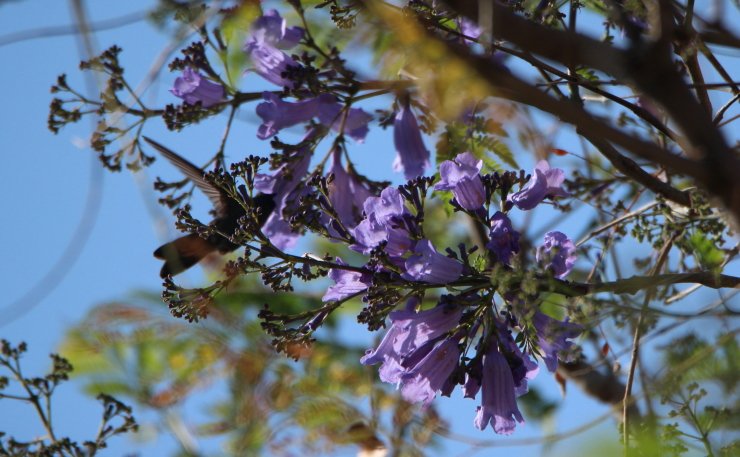 There’s a Berylline Hummingbird in there. The one at the top of this post is a Broad-billed Hummingbird.
There’s a Berylline Hummingbird in there. The one at the top of this post is a Broad-billed Hummingbird.
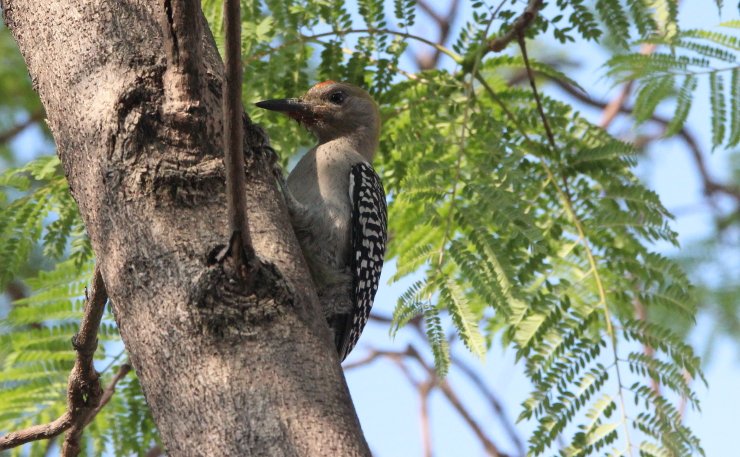
- Peach: My peach tree is another freebie, the progeny of a tree is placed in the wrong place when we moved in years ago. Most of the year, this is not a very birdy tree. But during its brief fruiting season, House Finches love to peck at the fruit. This year, that pair of Golden-fronted Woodpeckers are big customers as well.
- Pomegranate: This is a wonderful little garden tree, with year-long visual interest. New foliage is orange, as are the flowers, and the ripe fruit looks like Christmas ornaments. Hummingbirds like the flowers, and fruit-eating birds like Thrashers and Mockingbirds like the fruit. And it bears for more than half the year!
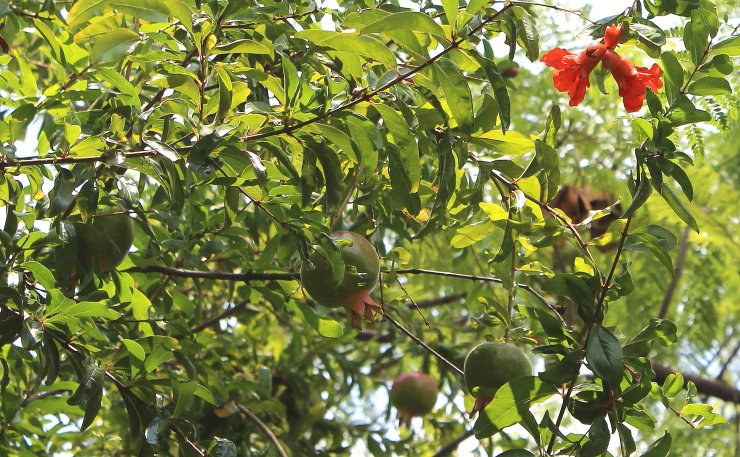
- Roses: For birds here, roses are… a good perch on your way to the birdbath. And nothing more.
- Salvias, salvias, salvias! (with a special mention for Penstemons and Agastache): I can’t get enough of these. Mine are mostly cutting-collected natives. They keep the Hummingbirds coming back year-round.
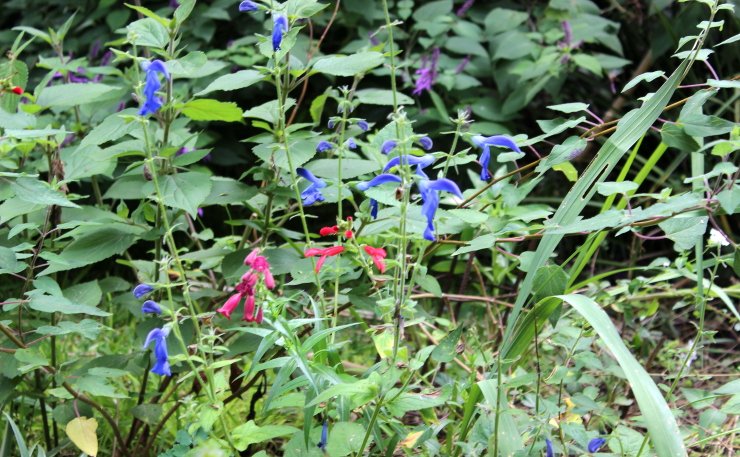 Three different native Sages and a Penstemon.
Three different native Sages and a Penstemon.
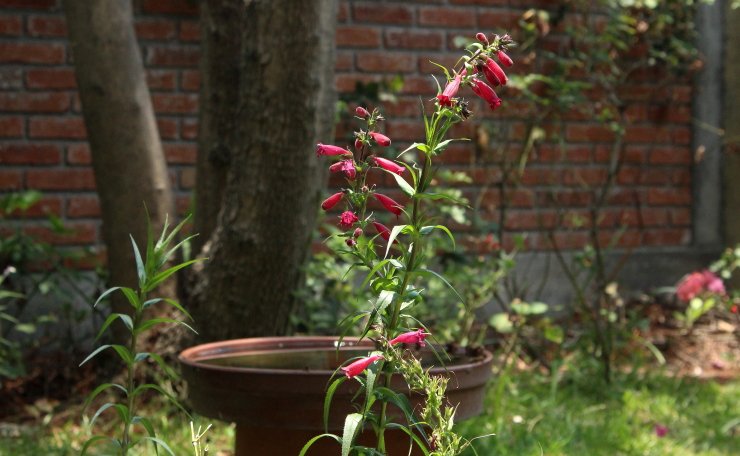 Just the native Penstemon.
Just the native Penstemon.
- Schefflera: Yes, this house plant grows outside here… to about 15 feet high! And this year, it produced big clusters of little purple fruits, which attracted Gray Silky-Flycatchers. How cool is that? Our two-story-tall Swiss Cheese Plant (Monstera deliciosa — I love that name!) also fruits here, but I am the only one who eats those fruits.
I will give honorable mention to Orchid Trees (Bauhinia), African Tulip Trees (Spathodea), and Honey Locusts (Gleditsea), because they are all beautiful and seem popular with the Hummingbirds. But I don’t have space for any more trees in my garden, so my personal experience with these is nil.
Also, at least down here, eucalyptus are exceptionally buggy trees. Swarms of Yellow-rumped Warblers can always be seen on these trees during the winter, although a half-dozen other Warbler species can often be found among them.
It is always a challenge to learn to garden in a new climate zone. But you can’t go wrong with a few rules:
- Lots of plants are better than a few plants.
- A few plants are better than no plants.
- A messy garden is better than an orderly garden.
- Aim for lots of fruit and flowers.
- Organic gardening is a must; those bugs you are spraying could be bird food.
- And, whatever you do, don’t forget to put in a birdbath!


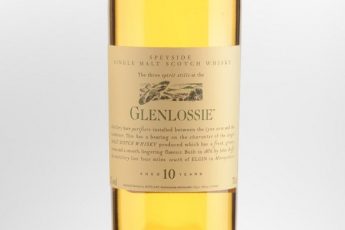

 New writers welcome – please contact us for details.
New writers welcome – please contact us for details.

















I am jealous of your beautiful garden.
One minor correction, though. Jacarandas are neotropical trees, primarily from Brazil. The ones growing in Madagascar, South Africa, and elsewhere, have all been introduced.
My bad! Actually, this fact makes me feel a bit better about having so many introduced plants in my garden. At least the jacaranda is from the Americas!